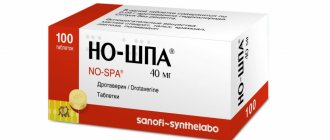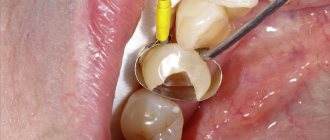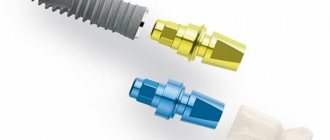5835
In dental practice, doctors use many tools and devices that allow both diagnosis and treatment.
However, many people associate an appointment with a dentist primarily with the characteristic whistling sound of a working drill.
This is in fact not only one of the most important, but also an absolutely irreplaceable tool, without which dental treatment would be difficult and of insufficient quality.
What it is?
A drill is a device that provides movement of the instrument with which dental procedures are performed . The device is rotary - this means that the movements performed are rotational.
The rotation speed of the instruments is high enough to perform many operations performed at dentists of various specializations.
The operating speed of these devices can reach 40 thousand revolutions per minute . Due to this, the sensations experienced by the patient are minimal. He does not feel pain, but many people develop a persistent dislike for the drill.
The fact is that during operation, the drive parts interact with each other, and their interaction generates a sound - whistling and quite high-pitched.
Photo: dental drill
Its tone affects the patient. At the same time, doctors do not experience such sensations, since they hear it constantly, get used to it and stop reacting.
An additional disadvantage and a negative factor influencing the attitude of patients is the vibration that will inevitably arise when working at such a speed, especially since the instrument comes into contact with hard tissues in the oral cavity, which enhances the perception.
Another feature of the operation of this dental apparatus is the rather unpleasant odor that occurs during the preparation of hard tissues . The tool seems to cut off parts of the tissue with fine dust, which is highly volatile.
Due to the high speed of movement, these particles heat up and, when they hit the corresponding receptors in the nose, cause associations with burnt bone. Water is used to cool the working tool, but it cannot completely prevent the spread of tissue particles removed from the tooth.
The best thing a patient who experiences extremely negative sensations just at the sight of a dental drill can do when entering the office is to relax as much as possible.
It must be remembered that all the unpleasant nuances of its operation are just technical features that should be treated like the engine of a running car.
To increase functionality, dental drills can be equipped with additional tools that are used to perform a wide range of operations with the highest precision.
Let's figure out whether pregnant women can have their teeth treated with anesthesia, is there an alternative?
This article presents the average prices for silvering baby teeth.
Here https://www.vash-dentist.ru/lechenie/zubyi/vse-o-mestnoy-anestezii-v-stomatologii.html we provide a list of contraindications to local anesthesia in dentistry.
Founder of Soviet dentistry
Riga dentist Pavel Georgievich Dauge was the first to understand that every person needs the help of a dentist. He was involved in the development of dentistry in the Soviet Union.
In the 20s, Dauge presented a book that dealt with dental treatment. He wrote that tooth decay can lead to other diseases. The dentist has also created a system of preventive measures that will help avoid tooth extraction. Pavel Georgievich trained dentists and scientists in cost-effective treatment.
Pavel Georgievich Dauge with his fellow doctors
His activities were relevant because in the 1930s the party decided to instill the basics of individual hygiene in Soviet citizens.
Application
Most often, it is used by therapists when treating cavities damaged by caries, cleaning and grinding hard dental tissues, fillings, and many other manipulations necessary during treatment.
Periodontists also use the drill . With its help, you can quickly and efficiently remove deposits formed on the enamel surface.
Orthopedists also use this device in their work. It may be required to cut bone tissue and smooth it. He can also handle the processing of the bed for the installation of various orthopedic structures, but the most common manipulation is considered to be the preparation of hard dental tissue for various purposes.
Dental technicians also use different types of drills with a wide variety of tips . The properties of these devices turn out to be indispensable in the manufacture of artificial dental crowns and various prostheses.
After fitting, additional processing may be required, which is also carried out using a drill.
Teeth in a glass
Most people lose almost all their teeth as they age. There were no prosthetics or nylon implants then. Therefore, people had to wear a hard “overshoe” that was, in principle, not adapted to the oral cavity. There were no fixing gels for prostheses, and the “overshoes” could move freely.
Teeth in a glass
Patients had to glue their dentures even with ordinary glue. At night they had to be removed, washed and stored in a glass. People constantly experienced discomfort, but there was no other alternative in the Soviet Union at that time.
Components
In one form or another, different models and types of dental drills contain several basic design elements that ensure the operation of the entire device and increase its functionality.
- Nozzle .
A direct working tool used for processing fabrics or performing other manipulations. Most often it is a bur, which is used to remove tissue by cutting. Additionally, grinding attachments, discs, etc. with different sizes and other parameters can be used as attachments for the drill. - Tip .
Serves to secure the nozzle, that is, it is an intermediate link for transmitting torque. In dental practice, both straight and bent tips are used. The choice of a specific type depends on the convenience of manipulation, that is, the location of the area requiring treatment, and the characteristics of the clinical picture. - Drive unit .
The most important part of the device, which directly transmits torque to the tools, is a micromotor or turbine, which operate on different principles. It is by the type of drive used that different types of drills will differ. - Shlens .
This part serves to connect the device with the main part - the control unit or a separate dental unit. Its presence allows, if necessary, to place the main part of the structure in a separate room in order to minimize the level of noise generated.
What products can be made
Carving has been practiced since ancient times, as evidenced by the found rock paintings, ornaments on dishes and other household items. People carved images on different materials: stone, glass, bone.
Wood carving with an engraver is a fascinating activity. With the invention of electrical assistants, decorative processing became simpler, and designs became more complex and elegant.
Wood carving has become popular not only in Russia, but in many countries around the world. For example, Canada, rich in forests, is famous for its architects.
They began to decorate with engraving:
- panels, paintings;
- carved balusters;
- icons, iconostasis;
- headboards of beds, furniture fronts;
- platbands for wooden log houses, baths;
- icon cases, frames.
Key rings, knife handles, corner decors - there’s just so much that wood craftsmen don’t decorate.
For reference! An engraver is a tool that replaced manual drawing on wood. In addition, the device can grind, polish small parts, and perform a long series of actions.
Artistic carving on the butt of a gun
Kinds
The main feature by which different types of dental drills differ is the type of drive used in the design.
Pneumatic
The most commonly used drills are those with a pneumatic or pneumatic turbine drive. Compressed air under high pressure is transmitted from the compressor through a special hose to the turbine tip.
Thanks to the characteristics of the compressor, it was possible to increase the rotation speed of the tip to almost 300 thousand revolutions. Due to this, the doctor has the opportunity to perform very precise treatment with complete painlessness for the patient , and also in less time.
At the same time, pneumatic turbine machines do not have high torque. Because of this, for high-quality work with some filling materials and tissues, other types of devices are used .
Electrical
A more correct name would sound like electromechanical. In rare cases, you can find such machines, the basis of which is a multi-link belt drive, but now they are used very little.
These old, Soviet devices were distinguished by relatively low rotation speeds and patients felt quite strong vibrations during the treatment process, which gave rise to pain during the preparation of hard tooth tissues.
At the moment, this type of drill, used during the USSR, has been replaced by electromechanical ones with a micromotor, which eliminate the listed disadvantages.
The rotation speed can reach 40 thousand revolutions per minute, which is less than that of pneumatic devices. However, there are quite high torque values , which plays an important role for the comfort of both the patient and the specialist.
Devices of this type can be used not only for pre-treatment and preparation of hard tissues and treatment of distant teeth, but also as a tool used for fitting dentures and precision processing of artificial crowns.
The device creates a fairly high noise level, so it is most often installed in a separate room. This also allows you to connect multiple installations to it.
Laser
This is a new generation of devices that do not have a rotational motor at all. Light energy is used as a tool here. Preparation of hard tissues occurs safely, quickly and completely without pain .
However, chemical filling materials cannot be used for filling after using a laser. In this case, fillings are placed only from light-curing materials.
Erbium lasers are most often used to treat hard tissues in dentistry.
A few words need to be said about the components of the laser drill, since its design is somewhat different from those listed:
- base unit – regulates the frequency and power of the light flow;
- foot pedal – switches on/off;
- light guide – directs and transmits the flow of light to the tip;
- tip - performs direct manipulation.
Portable devices
Portable types are incredibly convenient, as they allow you to provide dental care outdoors - in the field, at home, in rural clinics where there is no electrical supply.
The devices are small in size and equipped with a separate power source .
And the use of brushless micromotors, such as in the Forte 200A model, has made it possible to minimize the need to repair faults.
For one of the latest modernizations of a traditional drill, watch the video:
Painkillers and arsenic
Strengthening the nervous system, developing incredible endurance and unbreakable courage in the face of any threat - these were the qualities that patients possessed after a visit to a Soviet dentist.
All procedures were performed without anesthesia. It’s quite difficult for a modern person to imagine, but this is exactly the kind of medicine that existed in the Soviet Union. At that time, production almost did not produce syringes and needles. There were also no painkillers. But dentists always offered patients Novocaine. In most cases, this drug could cause an allergic reaction.
Arsenic in dentistry
And due to the lack of proper diagnosis, the doctor was guided by the person’s reaction. Therefore, screams could replace x-rays. But often the pain was so severe that the patient simply could not stand it. This occurred due to inflammation of the nerve. In such cases, dentists used arsenic, which destroyed the nerve. First, the doctor drilled out the tooth, and then placed arsenic into this hole. But in addition to the nerve, mucous tissue was most often damaged. If the patient did not come for an appointment within several days, the tooth had to be completely removed.
What does the price depend on?
You can trace the dependence of the price of a dental drill on a wide variety of factors , some of which are related only to the general laws of the market.
Among them:
- fluctuations in foreign currency exchange rates;
- choice of domestic or foreign manufacturer (an inevitable increase in cost due to transport costs);
- seller’s pricing policy (markups, discounts, promotions, etc.);
- buying a new or used device;
- the region in which the purchase is made, and much more.
The main factor influencing the cost is the specific type of installation being purchased. At the same time, among the same type of machine there may also be different prices, which in this case reflect differences in characteristics - power, additional functions, and so on.
Speaking about a specific numerical expression of price, we can give the average cost for individual types of drills :
- pneumatic - about 28-32 thousand rubles;
- electromechanical – 23-25 thousand;
- combined devices - 55-60 thousand;
- laser - more than 1 million rubles;
- portable - about 7-10 thousand.
Let's find out whether it hurts to remove a wisdom tooth, how necessary is this procedure?
In the next publication we will tell you what drugs are used for conduction anesthesia in dentistry.
Here https://www.vash-dentist.ru/lechenie/zubyi/emal/giperesteziya-simptomyi-raznovidnosti-terapiya.html we will talk about the features of the manifestation of hyperesthesia of dental enamel.
Below is the estimated price at which you can buy some models from different manufacturers.
- Selena-2000 (portable, electric) – about 24 thousand.
- RESTAR-03 (portable electric) – 17 thousand.
- Marathon N7 (portable electric) – 9,500 rubles;
- BPS 300/40-TECH (pneumatic, stationary on a stand) depending on additional equipment - from 17 to 25 thousand.
- BPK-01M (BPK-02/01) (pneumatic, stationary, has a built-in compressor) - 32-35 thousand.
- Mobilico MBD-110 (portable, combined) – 67-70 thousand.
- Waterlase C-100 Biolase (hydrokinetic laser for hard and soft tissues) – 1.2 million rubles.
Many people hate and fear going to the dentist. By learning more about one of the most important tools in dental practice, the drill, they can get rid of this aversion.
And regular preventive visits to the doctor will help prevent many problems with the teeth and the entire oral cavity.
If you find an error, please select a piece of text and press Ctrl+Enter.
Tags: treatment, operations in dentistry
Did you like the article? stay tuned
Previous article
What are dental consumables?
Next article
Why is it necessary to install a gum former?
Rules for beginners
Engravers work not only on wood, but also on stone, leather, glass, metal, bone, and plastic. In order for the work to be of high quality, and for the carver to carry it out comfortably, you need to know how to work with an engraver and adhere to the rules. This is especially important for beginners.
It is advisable for beginning carvers to master the technique of carving with a hand engraver rather than an electric one.
To begin with, they “stuff” their hand. They learn to cut grooves, grooves, and simple shapes. Necessary tools for working as a hand wood engraver:
- gravers with thin steel rods (v-shaped, angular, flat);
- lamp with lens;
- punches (for dotted lines, dots);
- chisels;
- substrate for the workpiece.
It is advisable for a beginning carver to use a tutorial with ready-made drawings, ornaments and techniques, or take several lessons from professionals.
Note! When working as a wood engraver, the workpiece is placed on a small cushion so that the material does not slip. The pillow itself is fixed with double-sided tape.
Rules for wood carving with an engraver for beginning carvers:
- The desktop should be free, no unnecessary objects.
- A special lamp for soft illumination of the workplace.
- It is unacceptable to jerk the instrument in different directions, play around with it, or knock on the table.
- The engraver must not be left accessible to children.
- While the instrument is running, it is prohibited to remove or change the attachment.
- During operation, the device should be kept away from your face to avoid accidental injury.
All attachments, cutters, and tools necessary for work should be laid out on shelves and drawers so that they can be easily retrieved without being dragged anywhere.
Shelves with woodcarver's tools
Master class for a beginner wood carver
First, the wood is selected. Experienced craftsmen do not recommend using pine because it is layered: a soft layer is combined with a hard one.
Description of the procedure for artistic carving.
- First they draw a sketch. Or they select a photograph or picture from other sources, for example, from the Internet.
- Place copy paper on a working wooden surface, and place a drawing on top. Secure with clamps.
- Using cutters, the outline of the future image is manually made.
- The drawing and background are polished. Sanding is a labor-intensive and painstaking task.
- Cover with stain. Apply varnish. But not all craftsmen like varnish coating. They use drying oil, which does not give unnecessary glare, the product remains matte.
This is what the work of novice carvers looks like.






